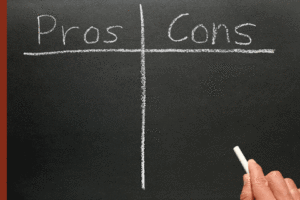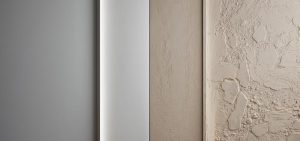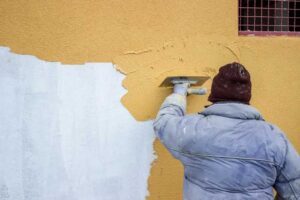Acrylic Stucco Problems in Canada
Hard coat stucco siding or traditional stucco is a siding material that has gained popularity among homeowners for years. The siding material is made from a combination of Portland cement, lime, sand, and water. The result of the mixture is a hard coat siding that is applied in three coats over a lath base. Traditional stucco has been a common choice among homeowners because it offers an array of advantages, including longer-lasting durability, natural resistance to fire, and low maintenance requirements. However, installing a traditional stucco is labour-intensive, thus affecting the cost. Being an expensive option, homeowners who want the same appearance and appeal choose the closest possible alternative, a synthetic stucco.
Synthetic stucco or acrylic stucco is less expensive and is commonly referred to as Exterior Insulation Finishing Systems (EIFS). Acrylic stucco offers a strikingly beautiful appearance to the homes it is installed in. Since the option became mainstream, many homeowners in Canada have adopted it partly due to the relatively cheap costs, energy-saving benefits, and beauty. Building contractors also love acrylic stucco because it offers great flexibility.
Synthetic stucco originated in Germany after the 2nd World War and was initially used in commercial building construction in Europe and the United States. Over time the practice was extended to residential buildings in the 1980s. The installation process begins with the attachment of an expanded polystyrene insulating board to the building’s exterior wall. The acrylic stucco is then applied in either one or two coats. The two-coat application usually has a fibreglass mesh reinforcement to boost durability and strength between the coats. The installers then add a finish coat, available in a variety of textures and colours, to provide a finishing seal to the stucco.
Although acrylic stucco has been adopted widely in residential and commercial property construction, it isn’t without its problems. Many property owners have complained bitterly about acrylic stucco problems that have cost them several hundreds of Canadian dollars to fix. In some cases, property owners have been forced to re-do their stucco for peace of mind and safety reasons.
These acrylic stucco problems include:
Thermal Break
A thermal break is one of the commonest acrylic stucco problems homeowners complain of. This problem arises due to the constituent of the installation – the fibreglass mesh or Styrofoam. While the fibreglass mesh or Styrofoam was added to improve insulation and boost energy saving, it may also be one of the causes of thermal breaks. The acrylic polymer used as the base and top layer of the mesh has a higher level of flexibility and plasticity, making it resistant to cracks; however, it does poorly in extreme temperatures. Acrylic stucco is vulnerable when exposed to extreme temperatures or high impacts from hail.
Water Problems
Traditional stucco contains a combination of Portland cement, lime, sand, and water. The sand contained in the mixture makes the stucco porous thus exposing it to wetness. However, the porosity and breathability of the material mean that it can dry out at a later time.
On the other hand, acrylic stucco is designed differently. Made from acrylic polymer, it is intended to be waterproof. This means the installation does not breathe at all and so creates stucco moisture problems when water penetrates its surface. Once there’s water penetration through cracks, poor flashing, or bad caulking, a new set of problems begin. The water may lead to rot, thus causing a potential safety and structural risk.
Increased Humidity Levels
Homeowners with acrylic stucco installed may also suffer from increased indoor humidity levels. This is one of the major acrylic stucco problems because the indoor space may become unsafe for residents. Increased humidity within the home may cause poor indoor air quality and give rise to other problems like mould and mildew, putting residents at higher risk of allergic reactions to mould spores, irritations, or breathing complications like asthma.
Some homeowners have also reported fungus growth on their interior walls or window frames. This is because acrylic stucco blocks exchanges between the indoor and outdoor space, which is great for insulation but can also be a problem with cold or wet air trapped inside the home.
Cracking, Peeling, and Bubbling Paint
Paints thrive on dry surfaces. However, with acrylic stucco installed on the exterior walls, there’s a high chance of a high indoor humidity level, which may cause the interior walls to become wet. Wet walls behave poorly, especially when coated with paint, and this may lead to bubbling paint problems. Not only does bubbling paint suggest wet walls and a potential structural problem, but it also affects the aesthetics of the indoor space. Wall cracks or paint cracks and peels may also occur due to the same problem.
Loss of Integrity
Structural compromise is the biggest problem homeowners can face. With acrylic stuccos, there’s a chance that this may happen, especially when water gets behind the acrylic stucco and the interior humidity level rises. The walls may suffer structural damage due to increasing moisture levels. Wood materials may also be compromised by rots and termite attacks promoted by moisture stored behind the acrylic stucco.
Other common problems reported by homeowners with acrylic stucco installed include;
- Rotting of wood trim
- Delamination – where there EIFS detaches from the sheathing of the building
- Cracks on the EIFS dressing bands around the window
- Drywall cracks
- Termite, ants, and other insect infestation
Solution
Many property owners who have experienced the acrylic stucco problems stated above have had to call on restoration experts to address the issue. However, new property owners may be able to discuss solutions with their construction contractors. The option of an ideal acrylic stucco system designed to better manage water that seeps behind the installation can help. Seeing as moisture is the biggest problem faced, Stucco contractors near you can introduce a solution that ensures proper water seepage from under the acrylic stucco. This solution may be in the form of introducing a special barrier paper, cement board to replace foam boards, old metal flashing, and a combination of Portland cement base coat and textured stucco material.
We specialize in stucco systems for both homes and commercial buildings. Whether you need a brand new stucco or just need your old one repaired, give us a call an we will help.




